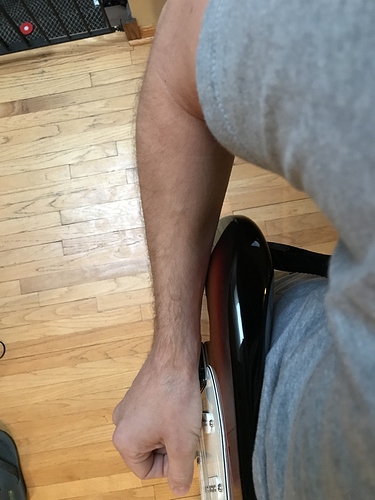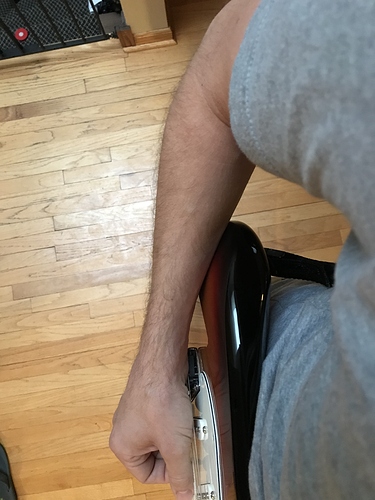Ah, this is all so very interesting because I had the same hunch all along but I didn’t quite know how to verbally express it.
I had the same “problems” with my LP vs Strat that I thought were due to differences in scale length or some other less correlated factor but I did eventually conclude that the lack of neck angle and the body pitch made it initially more difficult for me on the strat.
However, as I wanted to play it on the strat, I think by accident or pure trial and error I found a way to adjust and incidentally I found the cure was more counterintuitive than I thought: less intentional muting with the right hand, picking closer to the neck joint, and more exaggerated (but correct) mechanics for me. The discrepancy now feels much less than it did back then but boy was it quite a thing back then, especially since I had played mostly shorter scale guitars with heavy neck angles and bigger bodies.





